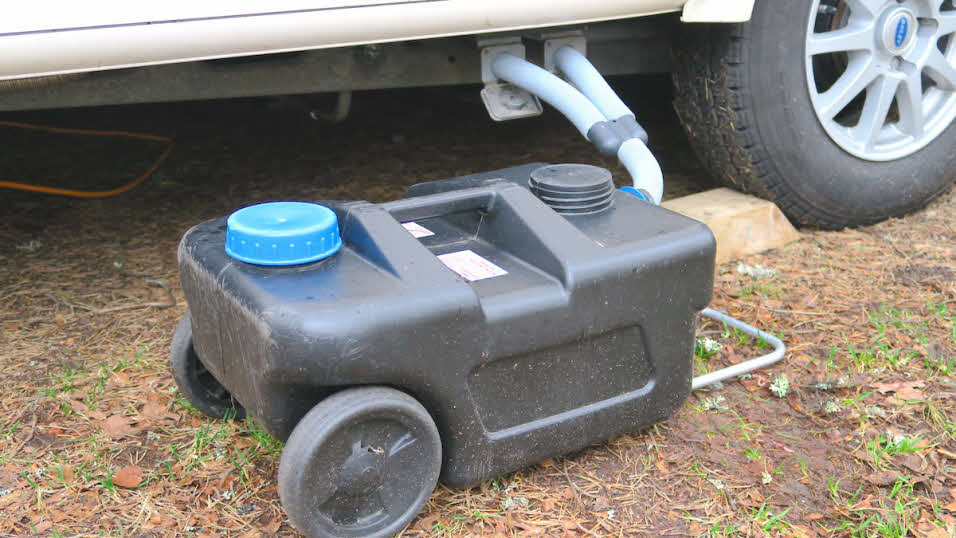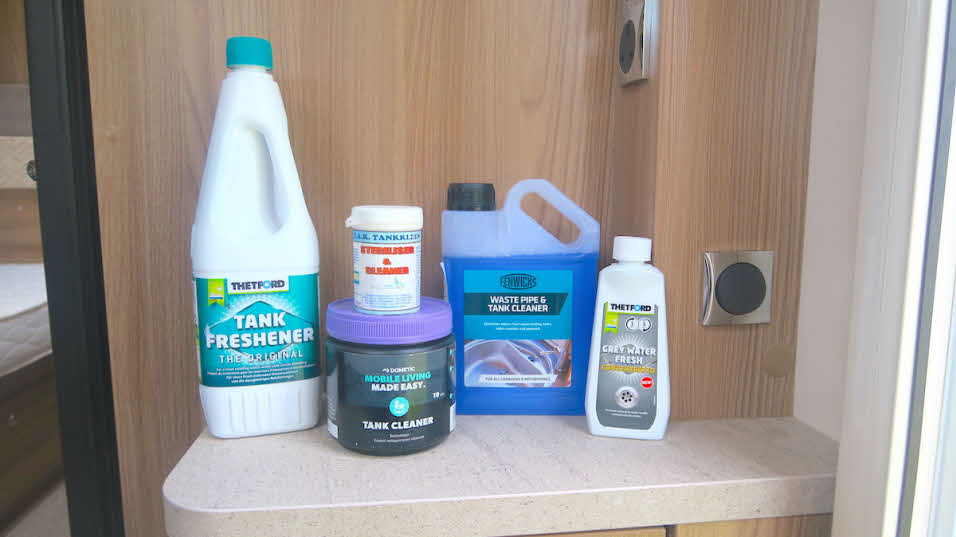Water supply to your caravan or motorhome
Systems designed to supply water to your caravan or motorhome are becoming more advanced. Sammy Faircloth provides a guide to the different options on the market as well as tips and advice to ensure they work efficiently.

There are many ways to bring water into your leisure vehicle, and supply systems are becoming increasingly sophisticated. While most owners make use of a portable water container (such as an Aquaroll), some caravans and most motorhomes are fitted with a tank.
On some sites you will find pitches equipped with private taps. In such cases you can use a ‘water hook-up’ (such as Whale’s ‘Watermaster Mains’ kit) to ‘plumb in’ your van for the duration of your stay. Alternatively you could take advantage of a mains water adaptor kit. A hose is connected from the mains water supply to the water container and a float inside said container opens a valve to top it up as needed (it works in a similar way to the float in your toilet cistern at home.
Here I take a look at a few aspects of your water system and offer a few tips along the way...
Water containers and tanks

Various forms of container are available for fresh or waste (sometimes referred to as ‘grey’) water. Plastic jerry cans and rolling water barrels, like the popular Aquaroll, are often used for fresh water, while trolley-type containers that slide under your vehicle (such as the Wastemaster) are good for waste water. I have even seen people use a bucket for waste water – not ideal as nasty smells are not contained.
Motorhome onboard fresh/waste water tanks are often hidden discreetly under the floor and accessible via an internal service hatch. These tanks can be filled or emptied at the motorhome service points found on Club sites. Although caravans are less likely to boast onboard fresh water tanks, you can find them in certain Bailey, Buccaneer and Compass ranges. To avoid instability you shouldn’t travel with a full tank while towing – and, of course, water takes up valuable payload.
Pump systems
There are two types of pumps – submersible and diaphragm – and both require a 12V supply. Most caravan water supplies work with a submersible pump, which is carefully lowered into the fresh water container, then plugged into the water inlet on the side of the caravan. Trapped air bubbles can affect the operation of your pump, so it is a good idea to occasionally swish the unit around in the water container (below water level) to release them.
You will usually find a diaphragm pump installed within the living area in a higher-spec caravan. Once on site, you simply connect a short length of hose from the external inlet to your water container. Diaphragm pumps are well engineered (some companies offer a repair service) and usually achieve a decent flow rate. However, they are more costly than submersible pumps and can be very noisy. Grit can damage the tiny pistons that create the water flow and the special filter has to be checked and cleaned periodically.
Pump switches
The electric motors fitted in water pumps need something to spur them into action. In most cases, this work is done by miniature switches mounted in the taps and the shower controls. As you turn the tap, two things happen: the water channel opens up and the microswitch is triggered, starting the motor.
If damp gets into the casing, the switch may stop working. Some tap assemblies have to be replaced in their entirety when this happens (which may involve removing the sink), but most taps are designed so that faulty microswitches can be replaced fairly easily.
Some leisure vehicles feature a pressure-sensitive switch that detects when a tap is opened and then responds by setting the pump into action. In diaphragm pumps this is usually inside the casing. Alternatively, it is possible to have a standalone pressure switch coupled up within the supply pipe that serves the tap.
Cleaning products

It is wise to sterilise the pipes and fresh water container/tank at the start of every season (or after any extended period of lack of use). Tests on water systems show that the most likely contaminations will cause respiratory infections, not stomach upsets as might be expected. So you are vulnerable even if you just breathe in contaminated water vapour while washing or washing up.
Various cleansing products are available, and the sterilising procedure can be as simple as drawing a solution through the system from the fresh water container. Always check the label to ensure that your chosen product is safe to use on the fresh water container/ tank/water heater etc.
Waste water systems also need a good clean, normally at the end of a season, and there are plenty of cleaners out there that help eradicate germs and remove nasty smells.


